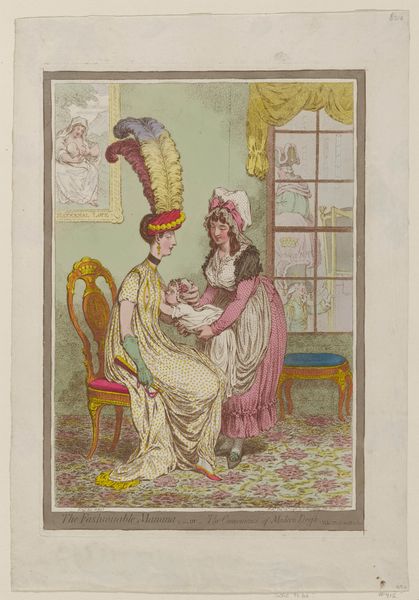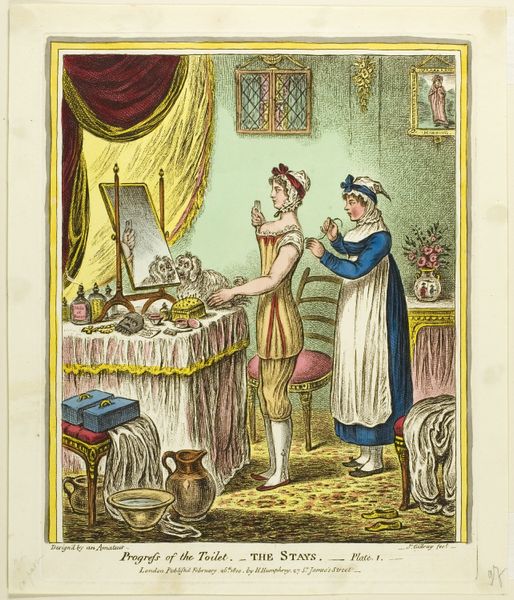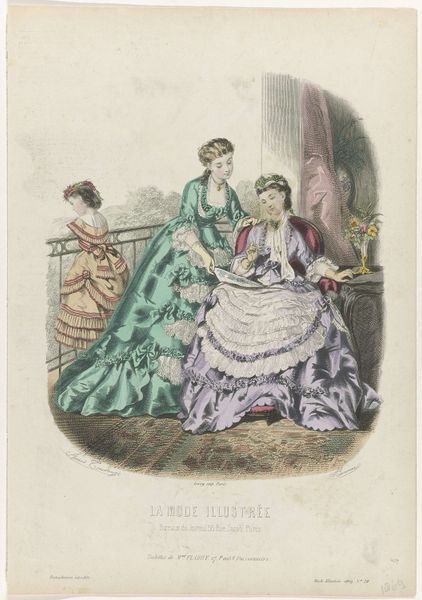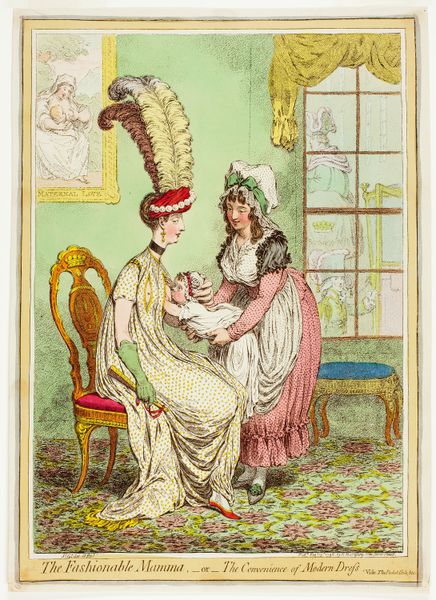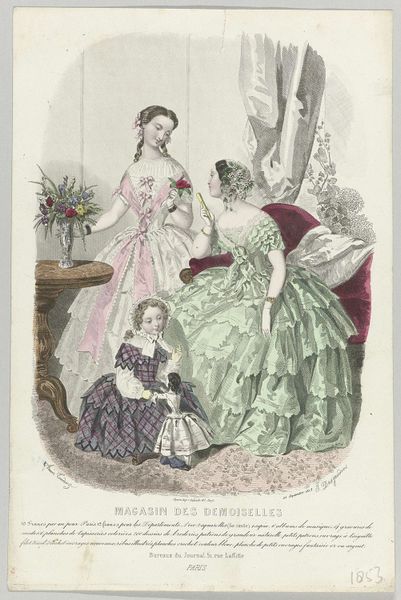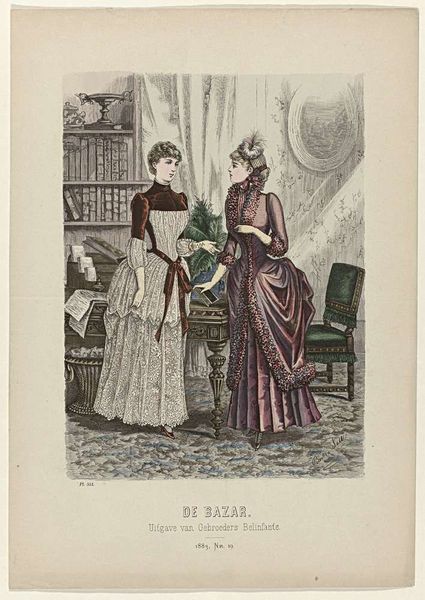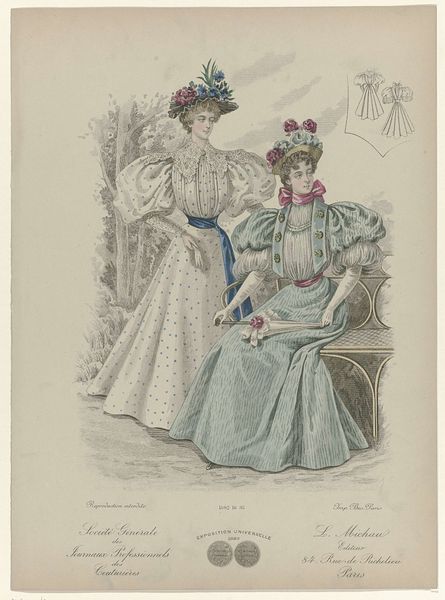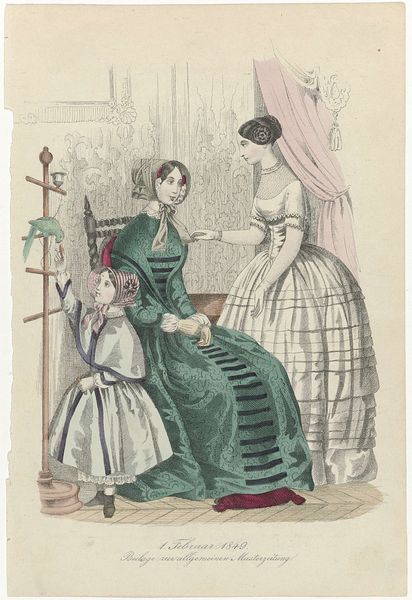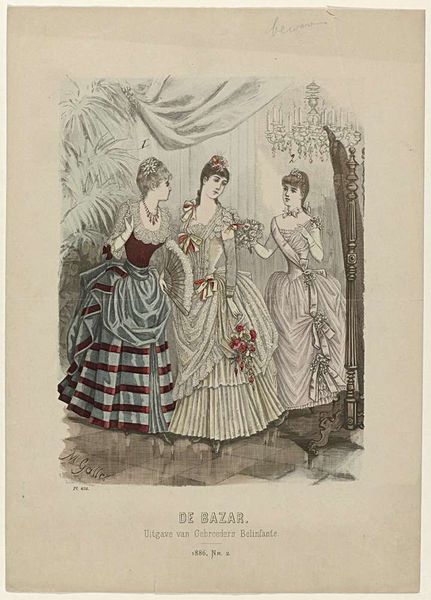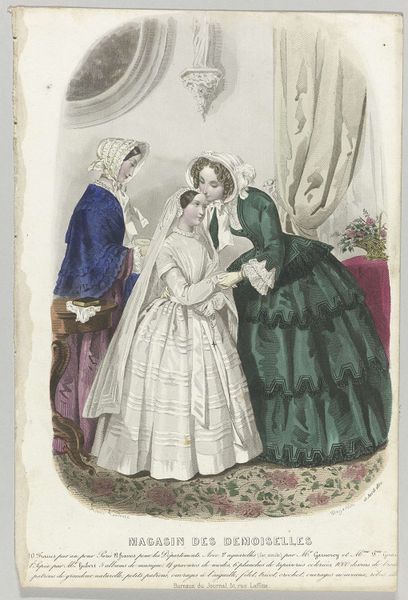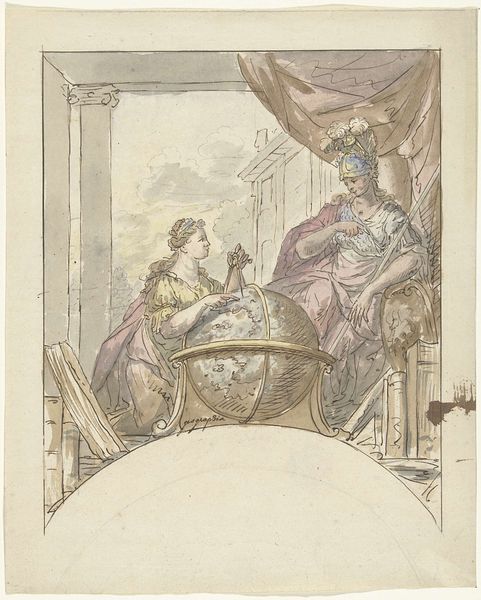
Dress Completed, plate three of Progress of the Toilet Possibly 1810
0:00
0:00
drawing, coloured-pencil, print, etching, paper
#
portrait
#
drawing
#
coloured-pencil
# print
#
etching
#
caricature
#
caricature
#
figuration
#
paper
#
coloured pencil
#
romanticism
#
genre-painting
Dimensions: 255 × 209 mm (image); 280 × 220 mm (plate); 305 × 260 mm (sheet)
Copyright: Public Domain
Editor: James Gillray's print, "Dress Completed, plate three of Progress of the Toilet," possibly from 1810, feels surprisingly modern with its focus on fashion and presentation. The lady in the drawing seems so concerned with her appearance. What do you see in this piece beyond the surface-level vanity? Curator: It’s tempting to simply see it as satire on frivolous fashion, but let's consider the social context. Gillray was working in a period of huge social upheaval. What might the "toilette," this elaborate ritual of dressing, represent within that socio-political climate? Think about class anxieties, the Napoleonic wars and the role of visual imagery in shaping public opinion. Editor: I see what you mean. It's not just about the dress, is it? It is more about displaying status? Perhaps performing wealth in a time of instability? Curator: Exactly. And notice how Gillray exaggerates certain features? It’s not just about accurately portraying a fashionable woman. It’s about constructing a commentary. To whom is this commentary aimed? Editor: I suppose at the upper classes? To reveal what he sees as their self-absorption, out of touch with everything happening outside their dressing room? Curator: Precisely. And what role does printmaking play in disseminating that critique? How did inexpensive prints democratize, or even weaponize, imagery in ways never before possible? Editor: I hadn't considered how accessible these prints were! So it's a kind of early form of political cartoon, holding the powerful to account. I always thought of Gillray as just funny. Curator: He was, but his humor served a purpose. It reveals anxieties about social mobility and the shifting balance of power during a tumultuous era. Editor: So, it’s about looking beyond the individual depicted to understand the message about society as a whole. It really encourages you to delve deeper! Curator: Indeed. By analyzing these images within their specific socio-political framework, we gain richer insights into the anxieties and ambitions of the time.
Comments
No comments
Be the first to comment and join the conversation on the ultimate creative platform.
